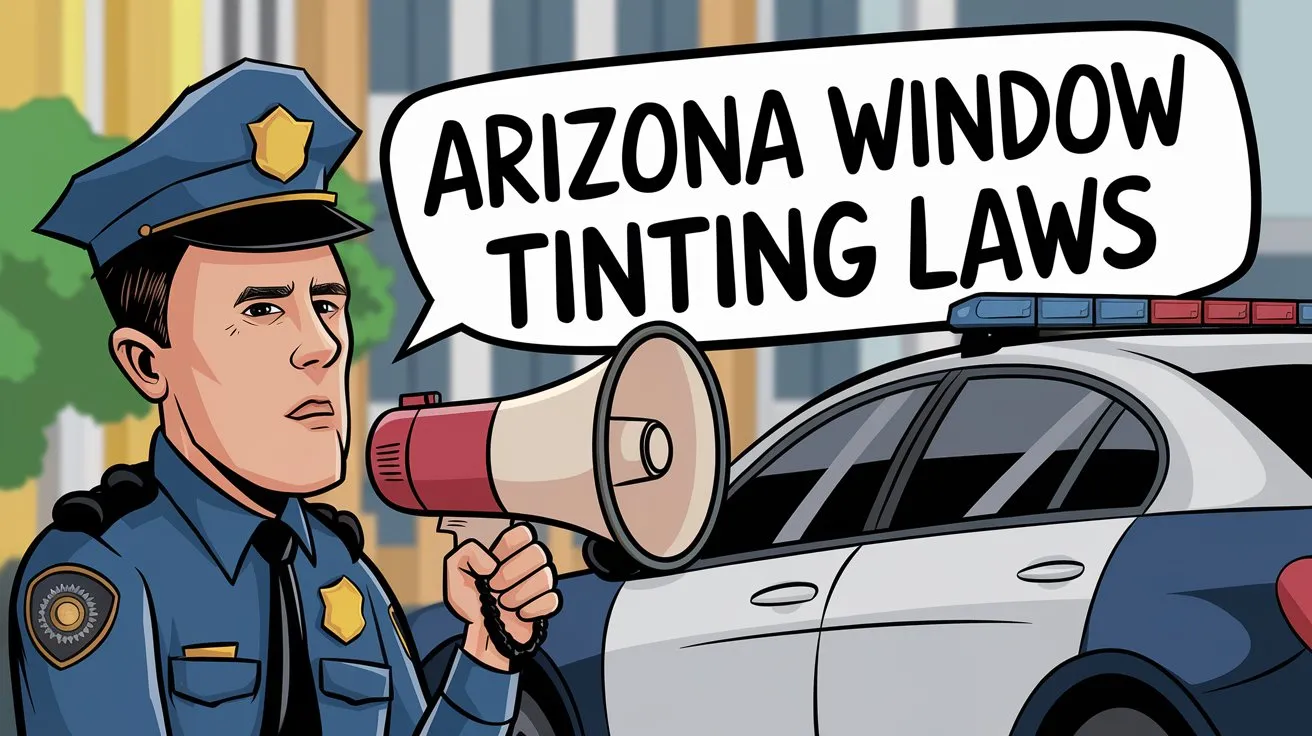When it comes to car customization and personal comfort, window tinting often tops the list. For Arizona residents, the intense desert sun makes tinted windows more than a style choice—they’re a necessity. However, Arizona window tinting laws set clear guidelines that every driver must follow to stay on the right side of the law.
In this comprehensive guide, we’ll break down Arizona window tinting laws, discuss the acceptable levels of tint, and help you understand what is considered legal. Whether you’re a car owner or thinking of getting your windows tinted, this article will equip you with the information you need.
What Are Arizona Window Tinting Laws?
Arizona has specific regulations governing the amount and type of tint you can apply to your vehicle’s windows. These laws ensure safety for all road users by maintaining clear visibility while allowing some relief from the sun’s glare.
Window tinting laws regulate the amount of visible light transmission (VLT) a window tint allows. VLT is the percentage of visible light that passes through your car windows. For example, a 35% tint means 35% of light enters your car, while 65% is blocked.
The purpose of these laws is to ensure drivers have enough visibility and that law enforcement can see inside vehicles for safety reasons. Each state has different requirements, and Arizona Tint Law 2024 outlines specific rules for each type of window on a vehicle.
Tinting laws balance personal comfort with public safety. Excessively dark windows can:
- Obstruct drivers’ visibility, increasing accident risks.
- Make it harder for law enforcement officers to see inside vehicles. Arizona’s regulations aim to provide adequate sun protection while ensuring visibility and safety.
Legal Window Tint in Arizona: What’s Allowed?
Arizona law specifies varying levels of window tint for different parts of the vehicle. These are measured by Visible Light Transmission (VLT), which indicates how much light can pass through the window. A lower VLT percentage means darker tinting.
1. Front Side Windows
- Legal Tint Percentage: Minimum of 33% VLT.
- This means at least 33% of outside light must pass through the tint.
2. Rear Side Windows
- Legal Tint Percentage: No restrictions.
- You can apply any level of tint darkness to your rear side windows.
3. Back Window
- Legal Tint Percentage: No restrictions, but you must have dual side mirrors if the back window is tinted.
4. Windshield
- Legal Tinting Rules:
- Non-reflective tint is allowed on the top AS-1 line (approximately the top 5 inches of the windshield).
5. Reflective Tints:
- Legal Tinting Rules:
- Tints should not be more than 35% reflective to avoid glare for other drivers.
Exemptions and Special Cases
Arizona offers medical exemptions for window tints for individuals with specific medical conditions, such as light sensitivity. If you qualify, you can apply for a permit allowing darker-than-usual tints on your vehicle.
Here’s what you’ll need:
- Proof of a medical condition from a licensed physician.
- An application was submitted to the Arizona Department of Transportation.
These medical exemptions for window tint in Arizona help individuals stay safe while adhering to state laws.
Penalties for Non-Compliance
Driving with illegal tints can lead to fines and other consequences. Penalties for illegal window tint in Arizona typically include:
- Fines of up to $250 for a first offense.
- Potential warnings or requests to remove the non-compliant tint.
- Repeat violations could result in increased fines.
Staying informed about Arizona window tinting laws will help you avoid unnecessary expenses and legal trouble.
Tips for Choosing a Compliant Tint
To ensure you choose a legal window tint in Arizona, follow these tips:
- Work with Professionals: Choose a certified tint shop familiar with Arizona tint law 2024. Ask them about their knowledge of Arizona’s specific rules.
- Check the Tint’s VLT Rating: Verify the percentage matches Arizona’s requirements for front, back, and rear windows.
- Ask About Reflective Properties: Ensure the tint complies with reflective window tint laws in Arizona to avoid glare issues.
- Request a Warranty: A warranty protects you against peeling, fading, or bubbles in your tint.
Benefits of Window Tinting in Arizona
Arizona’s intense heat and sun exposure make window tinting essential. Here’s why:
- Heat Reduction: Tinting reduces interior temperatures, making your car more comfortable.
- UV Protection: Tinted windows block harmful UV rays, protecting your skin and your vehicle’s interior.
- Enhanced Privacy: Darker tints on rear windows provide privacy without compromising visibility for the driver.
- Glare Reduction: Minimizes eye strain caused by bright sunlight or oncoming headlights at night.
Real-Life Example: What Happens When Tint Laws Are Ignored?
Meet John, a Phoenix resident who installed a 20% VLT tint on his front windows to combat the scorching summer heat. During a routine traffic stop, the officer measured his tint and issued a fine for violating Arizona’s legal requirements. Not only did John have to pay the penalty, but he also had to replace his tints, incurring additional costs. John’s experience highlights the importance of knowing and following Arizona tint law guidelines.
FAQs About Arizona Window Tinting Laws
1. Can I use reflective tints on my windshield?
No, reflective tints are not permitted on the windshield. Only non-reflective tint is allowed above the AS-1 line.
2. What happens if I move to Arizona with illegal tints?
Out-of-state vehicles must comply with Arizona’s tint laws once registered in the state.
3. How can I check my tint percentage?
A tint meter can measure your VLT percentage. Many auto shops and law enforcement agencies have these devices.
Conclusion
Following Arizona window tinting laws helps you enjoy the benefits of tinted windows while staying safe and legal. Understanding the rules about tint percentages, exemptions, and penalties will save you from unnecessary fines and ensure your vehicle meets state regulations.
If you’re unsure about compliance, consult with a professional tint shop and always double-check the latest Arizona tint law 2024. Safe driving!

